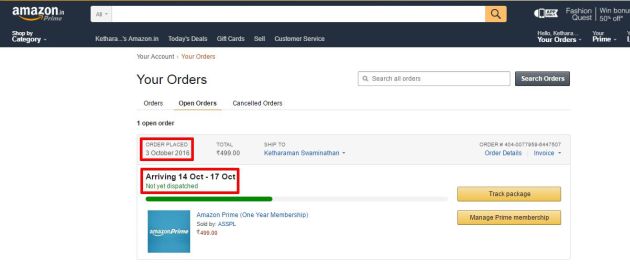Since I wrote Customers Of The World Unite, You Have Nothing To Lose But The Call Center Hold Music, many more brands are providing customer service via social media.
Some of them are doing a great job at it even though it’s early days e.g. Bajaj Allianz GIC (@BajajAllianz), Hootsuite Helpers (@Hootsuite_Help), Ministry of Railways (@RailMinIndia).
4 minutes. That's the fastest response I've EVER got from ANY brand to my complaint. Kudos to @RailMinIndia https://t.co/7LS8KjS1gs
— Ketharaman Swaminathan (@s_ketharaman) February 8, 2016
I’ll attribute this welcome trend to the convenient assumption that my blog post The Business Case For Social Media Customer Service has become the favorite reading material of brand managers in the interim:)
By social media customer service, I’ve so far implied interactions between consumers and brands via posts on Twitter, Facebook, Instagram, and other social networks. For example:
@HootSuite: I don't like your latest Android update. Can I roll back to the previous version?
— Ketharaman Swaminathan (@s_ketharaman) August 8, 2014
In this post, I’ll cover another form of social media interaction: (online) Review.
A review is a commentary about a product / service posted by consumers typically after they have experienced the said product / service. Reviews can appear on a brand’s website, blog and social media pages (e.g. BajajAllianz), an ecommerce company’s website (e.g. Amazon) or on specialized review portals (e.g. Yelp, MouthShut).
Like social media posts, reviews are out in the open. Since no brand would like to see their dirty linen washed in public – hopefully! – they invoke response. For example:
 A business associate had a bad experience with a plumber sourced from a home-services aggregator. He left a caustic review on its portal. The next day, a rep from the company called to ask him what went wrong and inquired what they could offer him to get him to remove his review.
A business associate had a bad experience with a plumber sourced from a home-services aggregator. He left a caustic review on its portal. The next day, a rep from the company called to ask him what went wrong and inquired what they could offer him to get him to remove his review.- The CEO of a leading executive recruitment firm had posted an update on LinkedIn. Someone commented that the company’s paid job search service was useless. He’d apparently complained about it via email but hadn’t received any reply from company. In sharp contrast, the company’s honcho himself replied back to the comment on LinkedIn.
- I had a problem with the CD shipped by a leading e-learning provider. After trying in vain to reach the company via telephone and email, I left a detailed comment about my experience on the company’s Facebook Wall. A couple of people from the company called me the next day to inquire what prompted my scathing remarks and asked me what they could do to remedy the situation. Click here for more about this incident.
Apart from these first hand experiences, I chanced upon a blog post titled How To Respond To Negative Reviews. When I noticed that it was written by an executive in a leading TELCO that’s not exactly known for its great CX, I had no more doubts that brands have become very sensitive to reviews.
I’m also getting the sneaking feeling from the aforementioned examples that reviews are more effective at eliciting service than social media posts. I can think of at least three reasons why this might be the case.
#1. Reviews Are Permanent
Social media posts are ephemeral and vanish from your timeline within a few hours of being posted; whereas reviews are like an email inbox and stay visible permanently until the reviewer deletes them (some brands are known to delete reviews but that’s blog post for another day).
Agreed. But in worst case in an ephemeral medium like Twitter, brands may find it hard to locate original tweet after 24h!
— Ketharaman Swaminathan (@s_ketharaman) August 28, 2016
#2. Reviews Are Democratic
Social media posts are subject to a class system. Their visibility is determined by the reviewer’s social graph. To take Twitter – by far the most popular social network for customer service – as an example, a rant typically reaches only the reviewer’s followers (not counting the additional reach generated by occasional retweets).
Therefore, a tweet by someone who has 10 Followers doesn’t have the same visibility as that by another who has 1 Million Followers. In an ideal world, brands should take both tweets equally seriously. But, in the real world, I won’t be surprised if brands ignore the first tweet.
On the other hand, reviews are democratic.
Because they’re written on a property owned by the brand / ecommerce company / review portal, all reviews enjoy equal reach. Everyone’s review is visible to every visitor of the website.
#3. Reviews Get More Traffic
Since review websites are well promoted, reviews attract way more traffic than an individual’s friends / followers / connections.
Compared to social media posts, reviews are more lethal in their capacity to tarnish a brand’s reputation. Not surprisingly, brands are taking reviews more seriously than social media posts.
Rating follows Review closely.
Inconsistency is a serious challenge here.
Left to their own devices, one consumer might give a 5* rating if there’s nothing wrong with a product / service (i.e. if it “meets expectation”) whereas another consumer might only give a 3* rating for the same level of performance, reserving a 5* rating only if everything goes well and more (i.e. only if it’s “outstanding”).
I belong to the second category and I’ve been giving 3-4* rating to most of my Uber rides. I recently heard on the grapevine that Uber drivers want raters to belong to the first category!
Brands can overcome the inconsistency challenge by stating their rating guidelines upfront. Like I’ve done on my book review website myBookAlert.

Published guidelines encourage raters to conform. While raters can deviate from them, the very presence of guidelines helps drive greater consistency of ratings. (I’m even prepared to revisit my driver ratings if Uber spells out its rating guidelines!).
How brands respond to reviews and ratings is a topic that merits a separate blog post.
Spoiler Alert: I’m partial to brands that have mastered the art of creating positive outcomes from negative reviews, whether after reading a Capterra’s blog post on the subject or otherwise.
.@BajajAllianz is a rare example of a company that takes social media feedback positively instead of immediately going on the defensive.
— Ketharaman Swaminathan (@s_ketharaman) November 15, 2013


